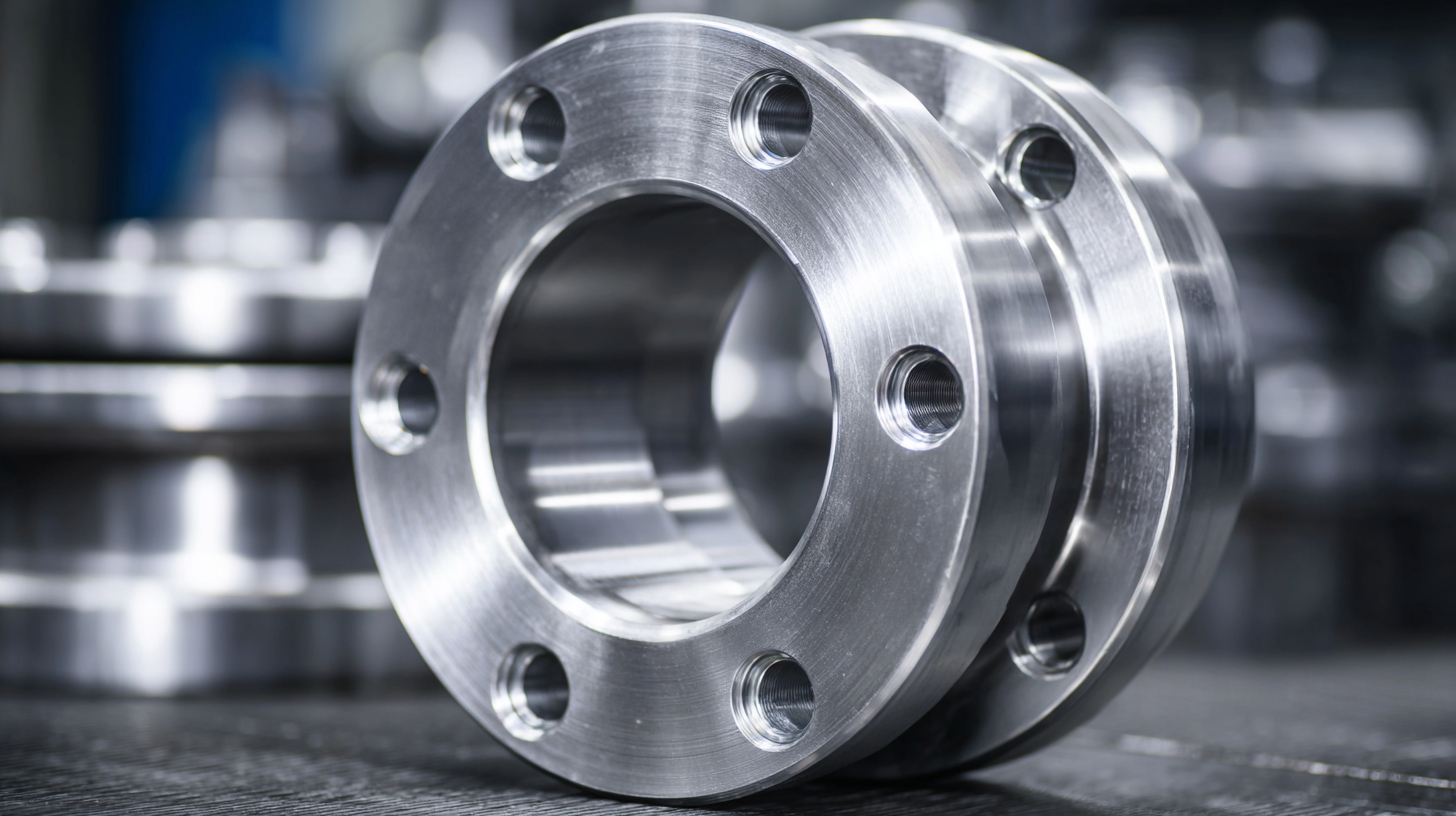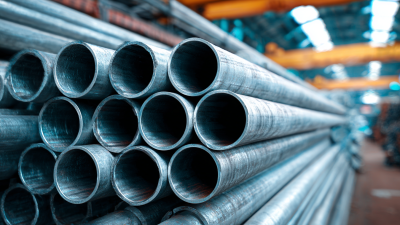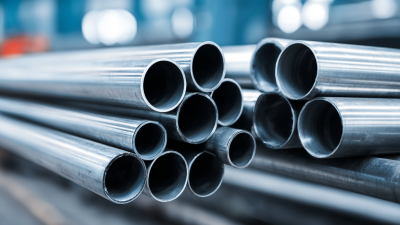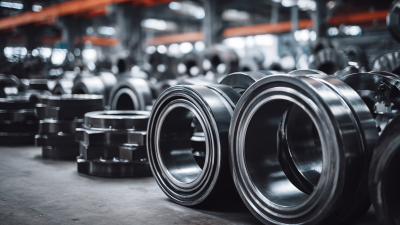The Essential Guide to Choosing the Right Stainless Steel Flange for Your Project
Choosing the right stainless steel flange for your project can be a daunting task, given the multitude of options available in the market. Stainless steel flanges are integral components in various piping systems, and their proper selection can significantly impact the overall efficiency and durability of your project. In this guide, we will explore the key factors to consider when selecting the best stainless steel flange, including material grade, size, pressure rating, and corrosion resistance. Understanding these elements will empower you to make informed decisions tailored to your specific needs, ensuring that your project meets the highest standards of quality and performance. Whether you're working on a small DIY task or a large industrial application, this essential guide will provide you with the knowledge needed to choose the best stainless steel flange that aligns perfectly with your project requirements.

Understanding Different Types of Stainless Steel Flanges for Your Project
When selecting the appropriate stainless steel flange for your project, understanding the various types available is crucial. Stainless steel flanges are primarily categorized into several types, such as slip-on, weld neck, blind, and socket weld. Each type has specific applications that suit different pressure and temperature requirements. According to a recent report by MarketsandMarkets, the global flanges market is projected to grow from USD 7.3 billion in 2021 to USD 9.3 billion by 2026, highlighting the increasing demand across industries such as oil and gas, power generation, and construction.

Slip-on flanges are popular for their ease of installation and moderate cost, making them suitable for low-pressure applications. In contrast, weld neck flanges offer a stronger connection and are ideal for severe pressure situations due to their design, which allows for a gradual transition of stresses. A study from Grand View Research reveals that high-performance flanges, like those made from 316 stainless steel, are favored in corrosive environments, showcasing a crucial aspect of material selection based on specific project needs and environmental conditions. Understanding these distinctions can significantly impact the performance and durability of your piping systems.
Key Considerations When Selecting the Right Size and Pressure Rating
When selecting the right stainless steel flange for your project, understanding size and pressure rating is crucial. The size of the flange must match the piping system it will be connected to, ensuring a proper fit and seal. Flanges come in various nominal sizes, typically ranging from small to large diameters. It is essential to measure the internal diameter of the pipe and consult industry standards to determine the appropriate flange size. A mismatch can lead to leaks, increased wear, and potential system failure.
Pressure rating is another vital consideration when choosing a flange. This rating indicates the maximum pressure the flange can safely withstand while in operation, which is essential for ensuring the durability and reliability of the joint under various conditions. Stainless steel flanges are available in different pressure classes, such as ANSI, ASME, and DIN, which define their strength and adaptability to different media types and temperatures. When selecting a flange, consider the specific conditions of your application, including the fluid type, flow rate, and operating temperature, to ensure you choose a flange that meets both size and pressure requirements effectively.

Evaluating Materials: Which Stainless Steel Grade is Best for Your Application?
When selecting the appropriate stainless steel flange for your project, evaluating the material is crucial, particularly the grade of stainless steel.
Stainless steel is categorized into various grades, each possessing unique properties, making them suitable for different applications. For instance, the commonly used 304 grade is known for its excellent corrosion resistance and is ideal for general purposes, while 316 grade offers enhanced resistance to chlorides and is thus preferred in marine or chemical environments.
Another consideration is the mechanical properties of the stainless steel grade. For applications involving high temperatures or extreme pressures, grades like 321 or 310 are more appropriate due to their superior strength and stability under such conditions. Additionally, factors such as welding capabilities and susceptibility to pitting or crevice corrosion should also inform your decision. By carefully evaluating the specific requirements of your application and the characteristics of each stainless steel grade, you can ensure that you choose the right flange that will perform effectively and provide durability for your project.
Installation Tips for Ensuring a Secure Fit with Stainless Steel Flanges
When it comes to installing stainless steel flanges, ensuring a secure fit is paramount for the integrity of your project. Adequate preparation is essential, starting with assessing the surface where the flange will be mounted. Make sure the mating surfaces are clean and free of contaminants to avoid any disruptions during installation. Utilizing the right gasket material is also critical, as it can influence the flange’s sealing capability. For best results, use a torque wrench to apply even pressure across the flange bolts to maintain a uniform seal.
Additionally, aligning the flanges properly is crucial. Misalignment can lead to leaks or mechanical stress, causing premature failure. It is recommended to check the alignment visually and with tools before tightening the bolts. Furthermore, incorporating lock washers can enhance stability by preventing loosening due to vibrations over time. By following these installation tips, you can ensure that your stainless steel flanges provide a durable and leak-proof fit, contributing to the overall success of your project.
The Essential Guide to Choosing the Right Stainless Steel Flange for Your Project - Installation Tips for Ensuring a Secure Fit with Stainless Steel Flanges
| Flange Type |
Material Grade |
Size (inches) |
Pressure Rating (psi) |
Recommended Gasket Material |
Installation Tips |
| Weld Neck Flange |
304 Stainless Steel |
2 |
150 |
PTFE |
Ensure proper alignment before welding; use plumbing paste on threads. |
| Slip-On Flange |
316 Stainless Steel |
3 |
300 |
GRAFOIL |
Check for clearance; bolt evenly to prevent warping. |
| Blind Flange |
309 Stainless Steel |
4 |
600 |
Cork |
Use a torque wrench for even tightening; clean surfaces before installation. |
| Socket Weld Flange |
316L Stainless Steel |
1.5 |
1500 |
Rubber |
Cleanly cut pipes; ensure proper gap for socket welding. |
| Threaded Flange |
321 Stainless Steel |
6 |
150 |
Spiral Wound |
Do not exceed the recommended torque; check for leaks post-installation. |
Common Mistakes to Avoid When Choosing Stainless Steel Flanges for Projects
When selecting stainless steel flanges for your project, there are several common mistakes that can lead to complications and increased costs. One frequent error is overlooking the compatibility of the flange material with the specific environment in which it will be used. Different types of stainless steel, such as 304 and 316, offer varying levels of corrosion resistance and strength. Failing to match the right type to the project requirements can result in premature failure or significant maintenance issues.
Another common pitfall is not considering the size and pressure rating of the flanges. Projects often require precise measurements to ensure proper fit and function. Using flanges that are too small or inadequately rated can lead to leaks, system inefficiencies, and potential safety hazards. Additionally, underestimating the importance of proper sealing techniques can compromise the integrity of the assembly, further emphasizing the need for careful preparation and planning during the selection process.
The Common Mistakes to Avoid When Choosing Stainless Steel Flanges

Home
About Us
Products
Carbon & Carbon Alloy Steel
Stainless Steel
Copper & Nickel Alloy
Heat Efficiency Tubes
Pipe Fittings
Pipe Flanges
Gasket, Stud Bolt &Nut
Industrial Valves
Tech & Service
Blog
Contact Us










